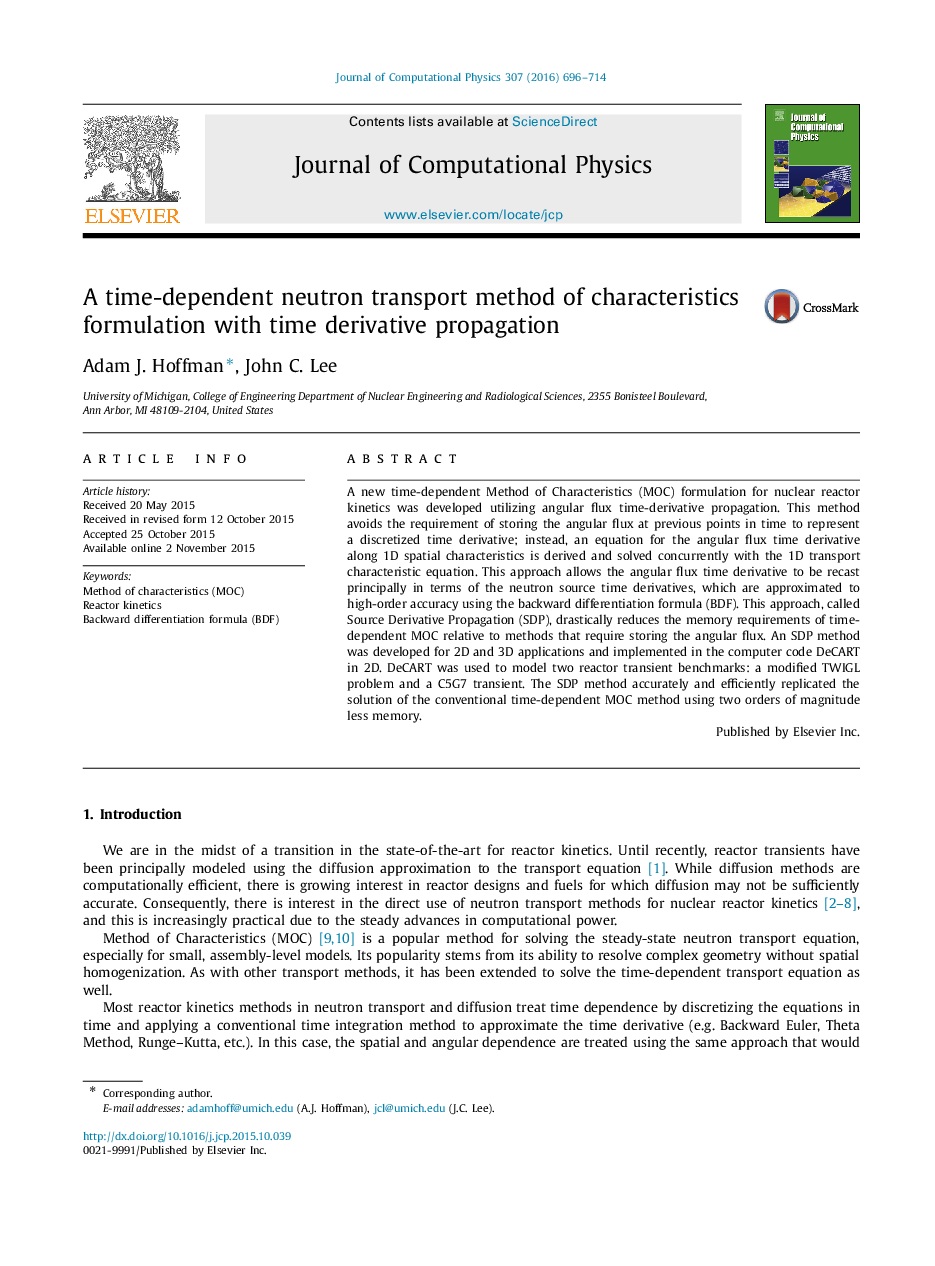| Article ID | Journal | Published Year | Pages | File Type |
|---|---|---|---|---|
| 6930633 | Journal of Computational Physics | 2016 | 19 Pages |
Abstract
A new time-dependent Method of Characteristics (MOC) formulation for nuclear reactor kinetics was developed utilizing angular flux time-derivative propagation. This method avoids the requirement of storing the angular flux at previous points in time to represent a discretized time derivative; instead, an equation for the angular flux time derivative along 1D spatial characteristics is derived and solved concurrently with the 1D transport characteristic equation. This approach allows the angular flux time derivative to be recast principally in terms of the neutron source time derivatives, which are approximated to high-order accuracy using the backward differentiation formula (BDF). This approach, called Source Derivative Propagation (SDP), drastically reduces the memory requirements of time-dependent MOC relative to methods that require storing the angular flux. An SDP method was developed for 2D and 3D applications and implemented in the computer code DeCART in 2D. DeCART was used to model two reactor transient benchmarks: a modified TWIGL problem and a C5G7 transient. The SDP method accurately and efficiently replicated the solution of the conventional time-dependent MOC method using two orders of magnitude less memory.
Related Topics
Physical Sciences and Engineering
Computer Science
Computer Science Applications
Authors
Adam J. Hoffman, John C. Lee,
